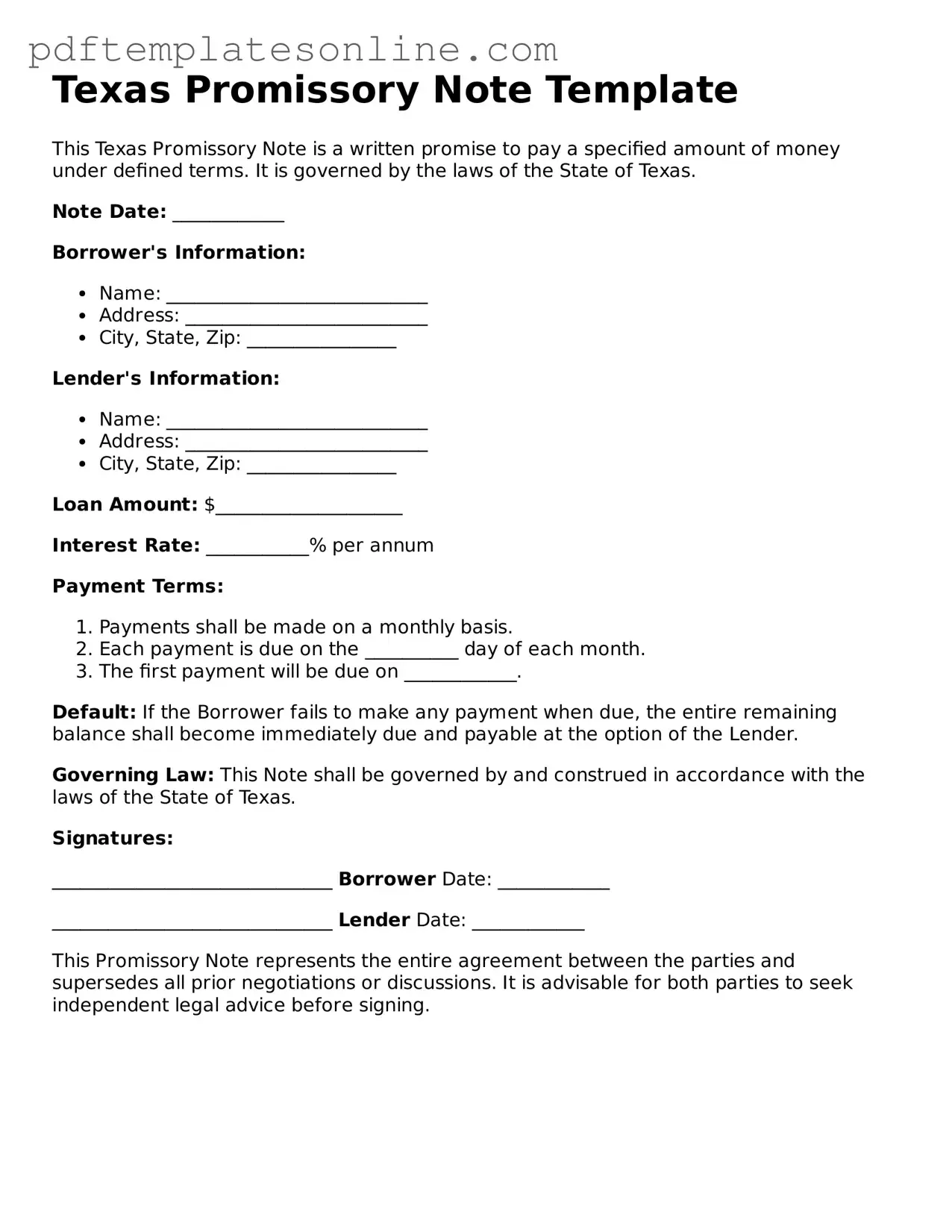Official Texas Promissory Note Document
A Texas Promissory Note is a written agreement in which one party promises to pay a specified sum of money to another party at a designated time or on demand. This document outlines the terms of the loan, including the interest rate and repayment schedule. Understanding the components of this form is essential for both borrowers and lenders to ensure clarity and enforceability.
Access Promissory Note Editor Now
